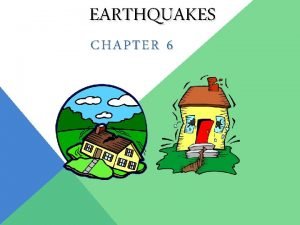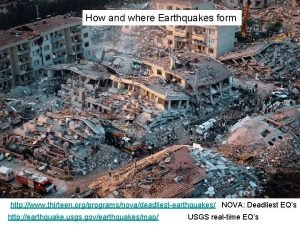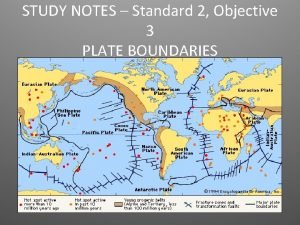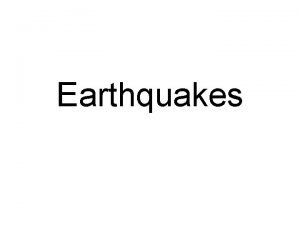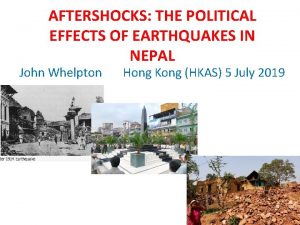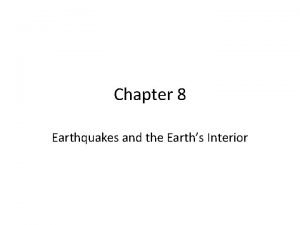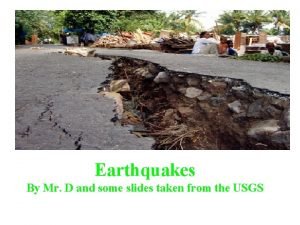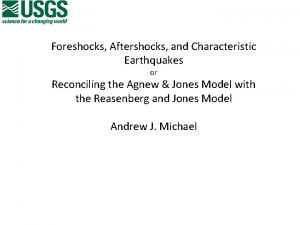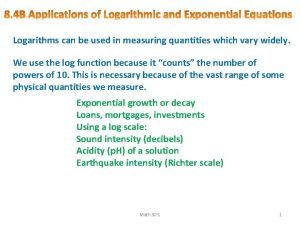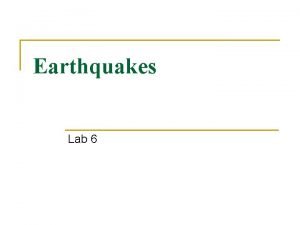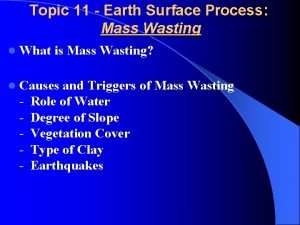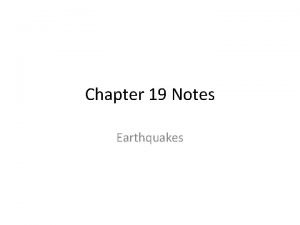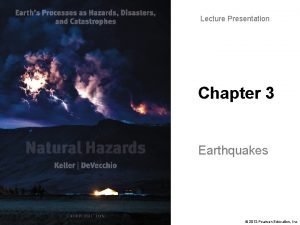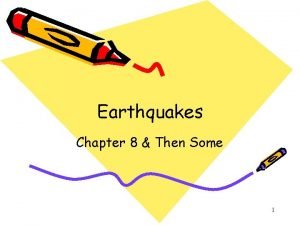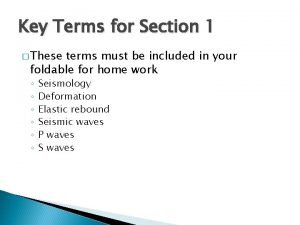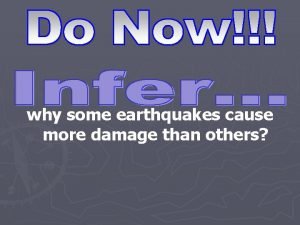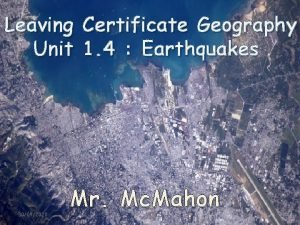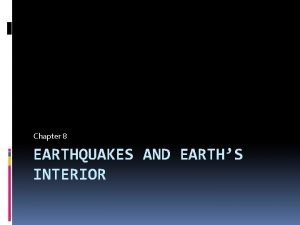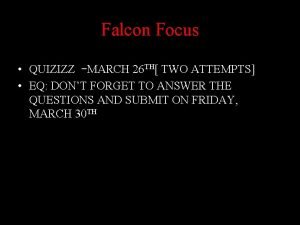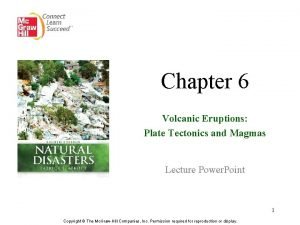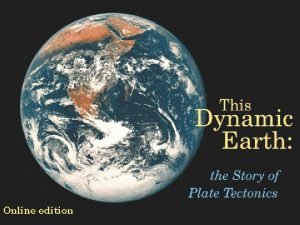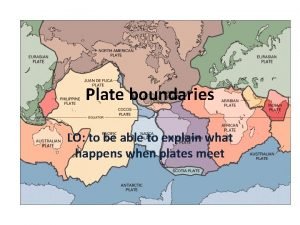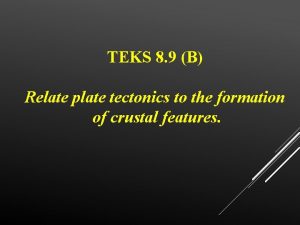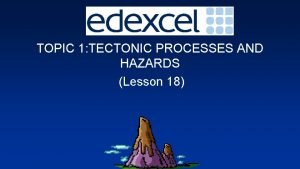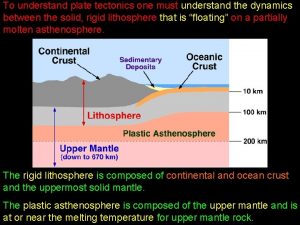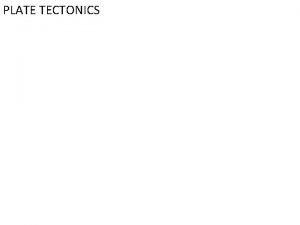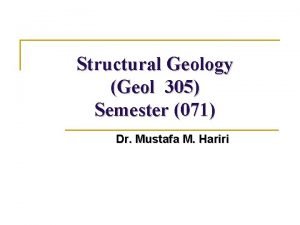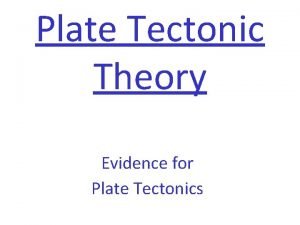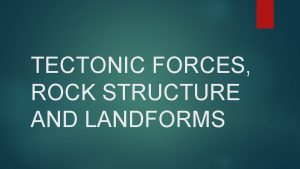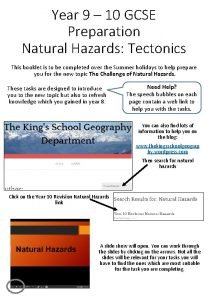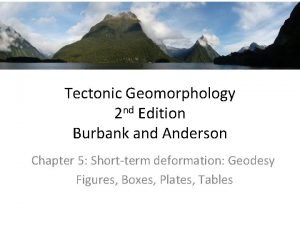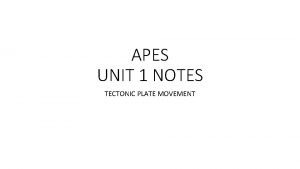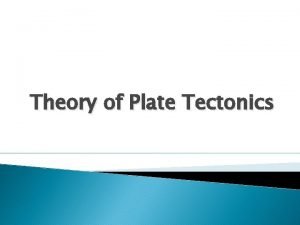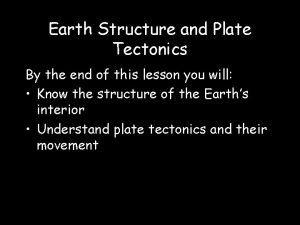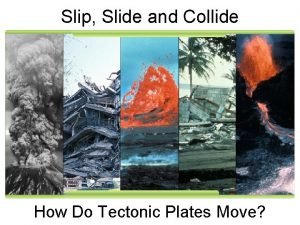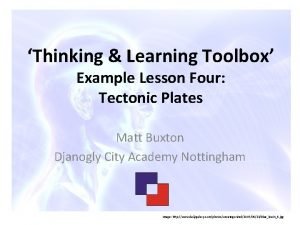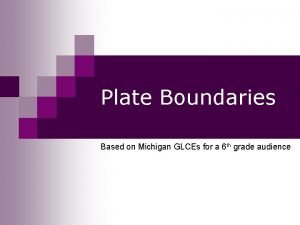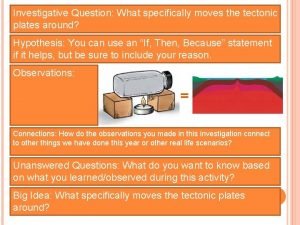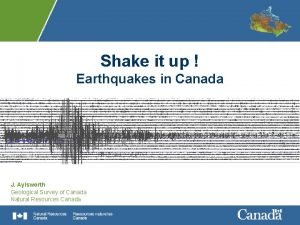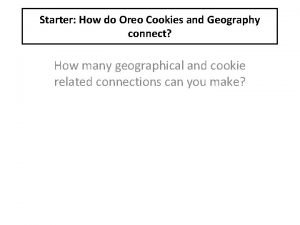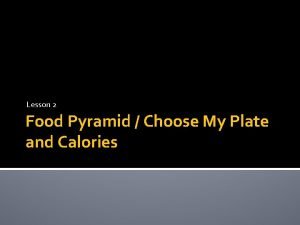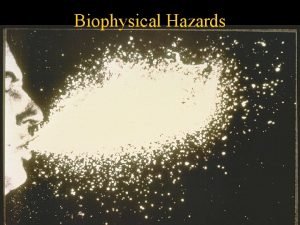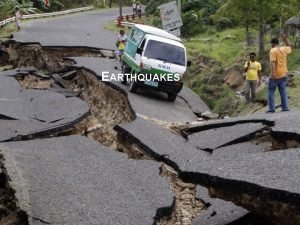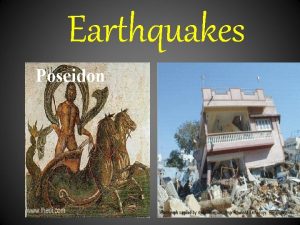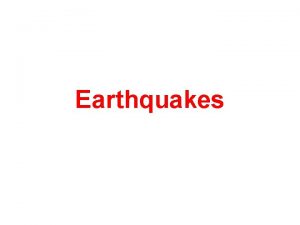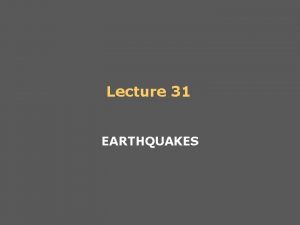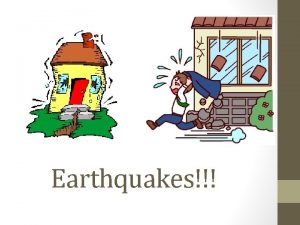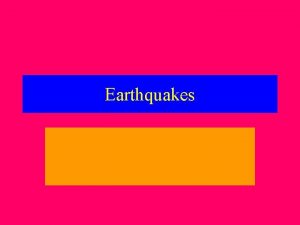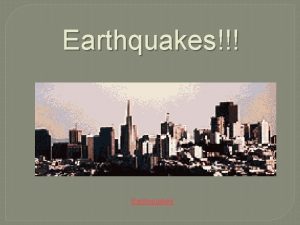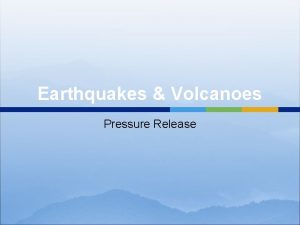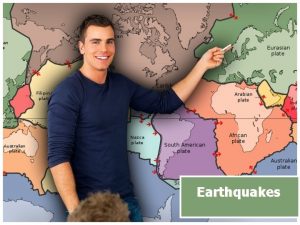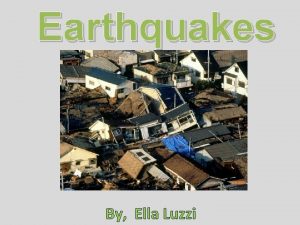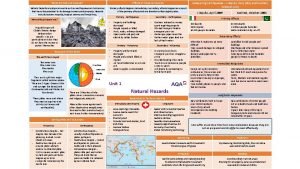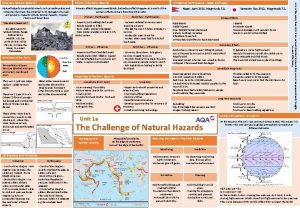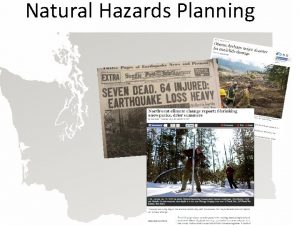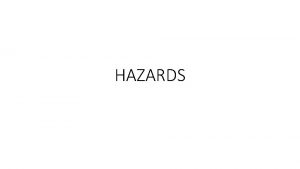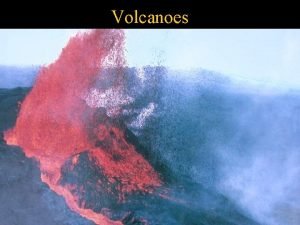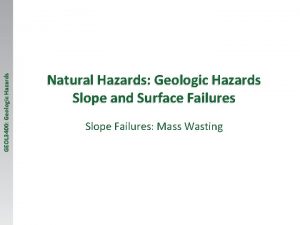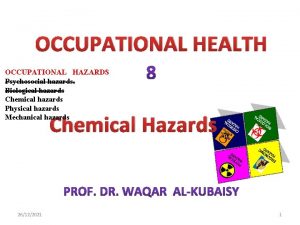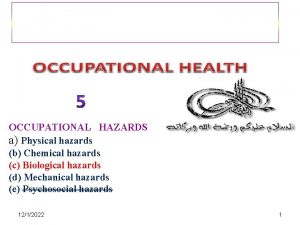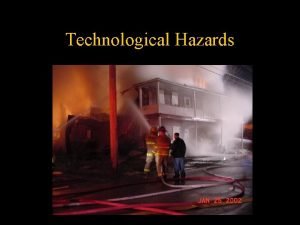Earthquakes Reading Smith Ch 6 Tectonic Hazards Tectonic



































































- Slides: 67

Earthquakes

Reading • Smith Ch 6

Tectonic Hazards • Tectonic: forces of ‘earth-building’ – Volcanoes – Earthquakes • Very much connected – plate tectonics – most earthquakes on plate boundaries, fault lines driven by plate movements.



Earthquakes • Sudden crustal movements • Usually shallow 0 -700 km deep

Earthquakes • Slow build-up of strain – driven by mantle convection? • Sudden release as crust moves: earthquake • Seismic waves radiate outwards

Earthquakes • Most damaging earthquakes are shallow – >40 km depth

San Fernando EQ 1971 • Richter M 6. 4 • Depth: 13 km

Tangshan EQ 1976 • At shallow depth • Killed 250, 000 to 750, 000

Earthquakes • Hypocentre: – underground centre of earthquake • Epicentre – the point on the surface above the hypocentre


Earthquake Magnitude • Richter Scale • Moment Magnitude • Mercalli Scale

Richter Scale • a. k. a. Local magnitude • Energy of seismic waves 100 km from source • =logarithm of ground motion in micrometres 100 km from epicentre • Scale is logarithmic – M 7 is 10 x motion of M 6

Richter Scale • >M 5. 5 for a major disaster • Most Eqs are small • Most EQ energy released in the Big Ones

Moment Magnitude • Surface area of fault displaced • <M 6. 5 use Richter • >M 6. 5 use Moment magnitude

Kobe EQ 1995 • M 6. 9 • Strong shaking on soft soils, landfill • Dense urban area nearby – Older homes with heavy clay-tile roofs not earthquake proof

Problems with these scales • Richter & Moment Magnitude don’t measure shaking and overall impact, just seismic energy • Can only be used if ground movement, epicentre, fault area is known • Useless for “historic” quakes

Modified Mercalli Scale • • MM scale: intensity of damage Roman numerals MM: I = not felt at all MM: XII= widespread destruction


Seismic Waves • Vertical stress, short wave period – ‘P’ or primary waves – ‘S’ or secondary waves – Moment Magnitude measures this • Horizontal stress, long wave period – Love Waves – Rayleigh waves – Richter scale /local magnitude measures this



P Waves • compression-dilation • 8 km/sec in solid & liquid

S Waves • Sine waves • 4 km/sec in solid only • can be destructive

Love & Rayleigh Waves • Horizontal shaking • at 90 degrees to wavefront • Most damaging to buildings

Other issues • Ground acceleration • Wave frequency

Mexico City EQ 1985 • High rise buildings collapse especially if in 22 -25 storey range • Taller and shorter buildings less damaged • EQ has just the right resonance to tear certain buildings apart

Small buildings • Resonant to short wave periods • P&S waves knock them down

Tall buildings • Resonant to long wave periods • Love & Rayleigh waves knock them down

Effects of Local Topography • Soft bouncy sediments amplify wave effects – ash – alluvium – landfill • Mexico City EQ 1985, San Salvador EQ 1986: cities on bouncy sediments

Secondary Effects • Soil failure • Slope failure • Tsunamis

Soil Liquifaction • Wet soil can liquify • Loses load-bearing properties • Richmond BC: – If Richter M 6. 5 EQ, high-rises may fall like dominoes in Fraser delta sediments




Lateral Spread • On shallow slope soil moves sideways

Ground Oscillation • Soil blocks rotate and surface crumples

Loss of Bearing Strength • Buildings sink into soil

Flow failure • On steeper slopes, slope collapses • Can cause damage over extensive area, long distance








Landslides, Rock & Snow Avalanches • EQ triggers slope failure

Huascaran Mountains, Peru 1970 • • • 30 m high wave of rock & mud Travelled 70 -100 m/sec buried Yungay & Ranrahirca Debris 10 m deep, Killed 18, 000 in 4 minutes

Tsunami • a. k. a. “tidal waves” • Large shallow submarine EQ triggers shockwave in sea • Difficult to spot out at sea • Moves fast

Tsunami • Wave height & speed increase as wave moves into shallow coastal water • Begins with water drawdown • Then violent oscillation for hours





Human Vulnerability • Many EQ zones well-known but densely inhabited • Populations often in coastal zone, valley lands – vulnerable to Tsunamis, debris flows – cities built on wobbly sediments



Human Vulnerability • Increased by poor construction techniques – not designed for horizontal shear – failure to avoid vulnerable sites, soil conditions – failure to avoid vulnerable zones

Maharashtra 1993

Timing • Deathtoll and damage rises if timing is unfortunate – 1923 Tokyo Bay EQ struck at lunchtime, starts fires, 130, 000 die – 1976 Tangshan EQ struck at night, people trapped indoors

Trigger Earthquakes • by crustal loading – build a large dam – storm surge in cyclone conditions • 1923 Tokyo Bay EQ

Prediction • Easier to predict where an EQ will happen than when – spotting “locked” areas surrounded by zones of movement • Forecasting not advanced – West: relies on science • Failed to spot Kobe 1995, Northridge 1994 – China: relies on culture (more accurate) • Failed to spot Tangshan 1976




 While reading activities
While reading activities Whats the main cause of most earthquakes
Whats the main cause of most earthquakes Why do earthquakes occur
Why do earthquakes occur Frequent earthquakes in an area may indicate
Frequent earthquakes in an area may indicate Explain natural disaster
Explain natural disaster Seismograph
Seismograph Earthquakes
Earthquakes Chapter 8 earthquakes and earth's interior
Chapter 8 earthquakes and earth's interior Normal fault definition
Normal fault definition In what section of earth do earthquakes happen?
In what section of earth do earthquakes happen? What are the factors of earthquake
What are the factors of earthquake Earthquakes
Earthquakes Http://earthquake.usgs.gov/earthquakes/map/
Http://earthquake.usgs.gov/earthquakes/map/ Diastrophic meaning
Diastrophic meaning Crescent-shaped cliffs at the head of a slump
Crescent-shaped cliffs at the head of a slump Chapter 19 earthquakes
Chapter 19 earthquakes Btn earthquakes
Btn earthquakes Chapter 19 earthquakes
Chapter 19 earthquakes Pearson education
Pearson education Chapter 8 quiz 1
Chapter 8 quiz 1 Chapter 8 earthquakes and volcanoes
Chapter 8 earthquakes and volcanoes 10 causes of earthquakes
10 causes of earthquakes Plastic deformation earthquakes
Plastic deformation earthquakes Why do some earthquakes cause more damage than others
Why do some earthquakes cause more damage than others Chapter 8 section 1 what are earthquakes
Chapter 8 section 1 what are earthquakes 10 causes of earthquakes
10 causes of earthquakes Chapter 8 earthquakes and earth's interior
Chapter 8 earthquakes and earth's interior A large crack in the earth formed by a river or earthquakes
A large crack in the earth formed by a river or earthquakes Aims of teaching
Aims of teaching Critical reading is an active process of discovery
Critical reading is an active process of discovery What is extensive reading
What is extensive reading Reading techniques and strategies
Reading techniques and strategies Extensive reading
Extensive reading Round robin reading vs popcorn reading
Round robin reading vs popcorn reading Reading strategies edb
Reading strategies edb Developing effective reading skills
Developing effective reading skills Tectonic plates quizizz
Tectonic plates quizizz Stratovolcano tectonic setting
Stratovolcano tectonic setting What tectonic plate is south africa part of
What tectonic plate is south africa part of Type of fault
Type of fault Blank plate tectonics map worksheet
Blank plate tectonics map worksheet Rift valley plate boundary
Rift valley plate boundary Tectonic hazard profiles
Tectonic hazard profiles The plate tectonic system is driven by *
The plate tectonic system is driven by * Tectonic plates move
Tectonic plates move Tectonic plates with names
Tectonic plates with names Tectonic joints
Tectonic joints How the continents fit together
How the continents fit together Tectonic
Tectonic Primary and secondary effects of a tectonic hazard
Primary and secondary effects of a tectonic hazard Coral head
Coral head Continent continent convergent
Continent continent convergent Oreo tectonic plates
Oreo tectonic plates Plate tectonics apes
Plate tectonics apes Tectonic plates interact at places called plate
Tectonic plates interact at places called plate Oreo plate tectonics
Oreo plate tectonics Inside a volcano
Inside a volcano What is this
What is this Slip slide and collide
Slip slide and collide Plate tectonic theory vs continental drift
Plate tectonic theory vs continental drift Tectonic
Tectonic What tectonic plate is michigan on
What tectonic plate is michigan on Questions about tectonic plates
Questions about tectonic plates Tectonic plates canada
Tectonic plates canada Continental drift vs plate tectonics theory
Continental drift vs plate tectonics theory Oreo objectives
Oreo objectives Ring of fire hotspots
Ring of fire hotspots My plates pyramid tectonic plates
My plates pyramid tectonic plates

